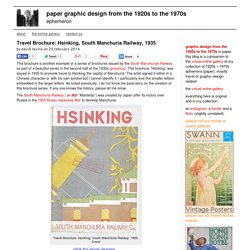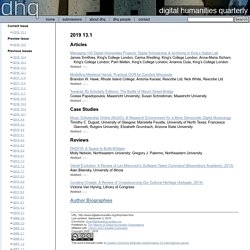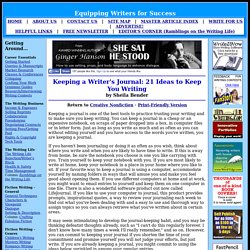

Illinois climate change report shows health, ecosystems at risk. Bronzeville Legends Mural Initiative. Houston pastor plays piano in flooded Texas home – video. Learn how to code. Visualizing Wifi. This is one of those things I’ve always wondered in the back of my mind.

How far does a WiFi network actually reach and what would it look like? How come I have reception in one spot and not in another? Well a team from Oslo including Timo Arnall, Jørn Knutsen, and Einar Sneve Martinussen set out to answer just such a question by creating visual representations of actual Wifi networks to spectacular effect. Utilizing long-exposure photography and a four-metre long measuring rod with 80 LED light points they were able to “reveal” cross-sections in wireless networks.
We built the WiFi measuring rod, a 4-metre tall probe containing 80 lights that respond to the Received Signal Strength (RSSI) of a particular WiFi network. See the full photo set and read much more about the project here. Graphic design 1920s 1930s 1940s 1960s 1970s in paper ephemera. This brochure is another example of a series of brochures issued by the South Manchurian Railway as part of a beautiful series in the second half of the 1930s (previous).

This brochure “Hsinking” was issued in 1935 to promote travel to Hsinking the capital of Manchuria. The artist signed it either in a Chinese character or with his own symbol but I cannot identify it. I particularly love the smaller letters embedded in the larger letters. As noted previously, I do not know the back story on the creation of this brochure series. If any one knows the history, please let me know. The South Manchuria Railway ( or 満鉄 “Mantetsu”) was created by Japan after its victory over Russia in the 1905 Russo-Japanese War to develop Manchuria. Travel Brochure: Hsinking, South Manchuria Railway, 1935, Cover click for more images…
29 Incredibly Useful Websites You Wish You Knew Earlier. There are so many wonderful websites around, and it is difficult to know each and every one of them.

The below list provides some of those websites that I find particularly helpful, even though they are not as famous or as prevalent as some of the big names out there. 1. BugMeNot Are you bugged constantly to sign up for websites, even though you do not wish to share your email? If yes, then BugMeNot is for you. 2. This nifty little website tracks whether the emails sent by you were opened and read by the receiver. Traveling. Travel. DHQ: Digital Humanities Quarterly: 2012. Managing 100 Digital Humanities Projects: Digital Scholarship & Archiving in King’s Digital Lab James Smithies, King's College London; Carina Westling, King's College London; Anna-Maria Sichani, King's College London; Pam Mellen, King's College London; Arianna Ciula, King's College London Modelling Medieval Hands: Practical OCR for Caroline Minuscule Brandon W.

Hawk, Rhode Island College; Antonia Karaisl, Rescribe Ltd; Nick White, Rescribe Ltd Towards 3D Scholarly Editions: The Battle of Mount Street Bridge Costas Papadopoulos, Maastricht University; Susan Schreibman, Maastricht University Music Scholarship Online (MuSO): A Research Environment for a More Democratic Digital Musicology Timothy C. DH2018: A Space to Build Bridges Molly Nebiolo, Northeastern University; Gregory J. Velvet Evolution: A Review of Lev Manovich's Software Takes Command (Bloomsbury Academic, 2013) Alan Bilansky, University of Illinois. Storys. Cahokia. Interactive maps. 5 Unusual Ways to Start Working Smarter, Not Harder, Backed by Science.
One of the things I love about the culture at Buffer is the emphasis on working smarter, not harder.

Our team is all about getting plenty of sleep, exercise and recreation time so that our time spent working is as productive as it can be. Working harder can be an easy habit to slip into, though. Sometimes it’s hard to switch off at the end of the day, or to take time out on the weekend and stop thinking about work. With a startup of my own to run, I find this even harder to manage lately. Whenever I’m not working on Buffer, I’m working on Exist, and it’s easy to fall into a pattern of “always working,” rather than working smart and fitting in time to look after myself as well. If this happens to you, too, here are five methods to try that’ll help get you working smarter, not harder. 1. In one of my favorite books, Stephen Covey tells a story about a woodcutter whose saw gets more blunt as time passes and he continues cutting down trees. 2. So when should you be taking a nap? 3. 4. 5. Journaling. How To Start Keeping A Journal. At some point you have probably already read somewhere about the importance of keeping a trading journal.

In other words, taking time each and every day to write down and store your thoughts, observations and actions concerning the market and your trading activities. This exercise is done not only to keep those stored for future reference, but also as a self-evaluation tool to track your development. Given the complexity of the market, it is impossible for most us to recall simply from memory what we’ve learned, how we’ve acted in certain situations, and more importantly the best tactics to employ in specific market conditions and situations. In fact, the more and longer you trade, this task become even more challenging. A big part of trading successfully is learning how to use and take advantage of your past experiences and remembering lessons learned. If you ask most successful traders they will tell you that keeping a journal can be helpful. Keeping a Writer's Journal: 21 Ideas to Keep You Writing.
Keeping a Writer's Journal: 21 Ideas to Keep You Writing by Sheila Bender Return to Creative Nonfiction · Print-Friendly Version.

Cross Curriculum. Vintage Images. Illustration. Maps.